
San Andrés-San Pablo: The Historic Heartbeat of Córdoba
Explore the historic charm of San Andrés-San Pablo in Córdoba, where ancient streets, vibrant courtyards, and Andalusian traditions come alive.
Nestled in the heart of Córdoba, the San Andrés-San Pablo neighbourhood is a treasure trove of Spanish history and culture. This area is renowned for its stunning architecture, from the impressive churches of San Andrés and San Pablo to the charming whitewashed houses adorned with vibrant floral displays. Walking through the narrow cobbled streets, you'll feel as if you've stepped back in time. San Andrés-San Pablo is not just about history; it is a lively neighbourhood where the past and present beautifully blend. The area is sprinkled with quaint cafes, traditional tapas bars, and artisan shops, offering a sensory feast for visitors. Here, you can savour the flavours of Andalusian cuisine, with local specialties such as salmorejo and flamenquín, while enjoying the sounds of live flamenco music that often fills the air. One of the highlights of visiting this neighbourhood is exploring its hidden courtyards, or 'patios', which are often open to the public during the famous Córdoba Patio Festival in May. These patios are a testament to the residents' pride in their heritage, showcasing meticulously maintained gardens that burst with colour and fragrance. Whether you're a history buff, a foodie, or simply looking to soak in the local culture, San Andrés-San Pablo offers a rich and unforgettable experience.
Local tips in San Andrés-San Pablo
- Visit during the Córdoba Patio Festival in May to see the courtyards in full bloom.
- Try local dishes like salmorejo and flamenquín at traditional tapas bars.
- Wear comfortable shoes for walking on cobblestone streets.
- Check out the live flamenco performances often held in local bars.
- Visit early in the morning or late afternoon to avoid the midday heat.
San Andrés-San Pablo: The Historic Heartbeat of Córdoba
Nestled in the heart of Córdoba, the San Andrés-San Pablo neighbourhood is a treasure trove of Spanish history and culture. This area is renowned for its stunning architecture, from the impressive churches of San Andrés and San Pablo to the charming whitewashed houses adorned with vibrant floral displays. Walking through the narrow cobbled streets, you'll feel as if you've stepped back in time. San Andrés-San Pablo is not just about history; it is a lively neighbourhood where the past and present beautifully blend. The area is sprinkled with quaint cafes, traditional tapas bars, and artisan shops, offering a sensory feast for visitors. Here, you can savour the flavours of Andalusian cuisine, with local specialties such as salmorejo and flamenquín, while enjoying the sounds of live flamenco music that often fills the air. One of the highlights of visiting this neighbourhood is exploring its hidden courtyards, or 'patios', which are often open to the public during the famous Córdoba Patio Festival in May. These patios are a testament to the residents' pride in their heritage, showcasing meticulously maintained gardens that burst with colour and fragrance. Whether you're a history buff, a foodie, or simply looking to soak in the local culture, San Andrés-San Pablo offers a rich and unforgettable experience.
Iconic landmarks you can’t miss
Alcazar of the Christian Monarchs
Explore the stunning Alcazar of the Christian Monarchs, a historic fortress combining rich architecture, beautiful gardens, and fascinating stories of Córdoba.

Roman Bridge of Córdoba
Immerse yourself in history at the Roman Bridge of Córdoba, a stunning architectural marvel that beautifully connects the past with the vibrant present.

Plaza de la Corredera
Discover the charm of Plaza de la Corredera, a historic square in Córdoba that captivates with its stunning architecture and vibrant local culture.

Cristo de los Faroles
Discover the enchanting Cristo de los Faroles in Córdoba, a captivating sculpture that illuminates the spiritual and artistic heritage of the region.
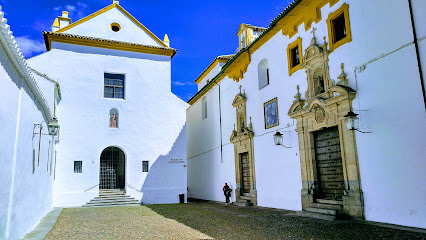
Puerta del Puente
Discover the stunning architecture and rich history of Puerta del Puente, a must-visit historical landmark in the heart of Córdoba.
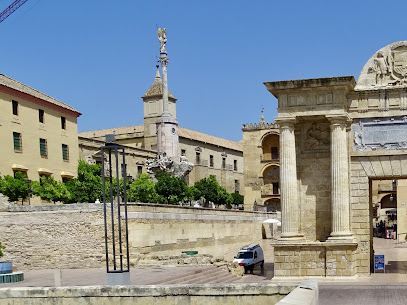
Baños Árabes de Santa María
Discover the historic Baños Árabes de Santa María in Córdoba, a serene retreat blending cultural heritage and relaxation.
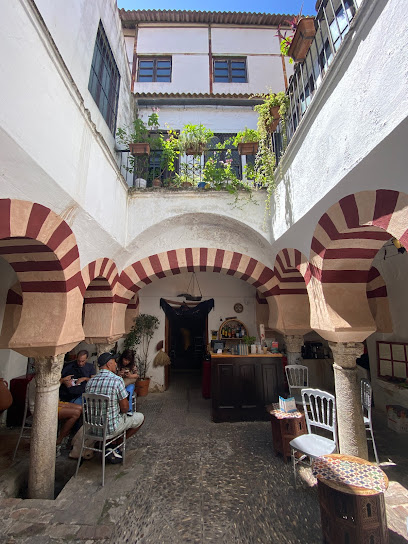
Triunfo de San Rafael de la Puerta del Puente
Discover the architectural splendor and spiritual significance of the Triunfo de San Rafael, a historic landmark in Córdoba, Spain, celebrating rich cultural heritage.
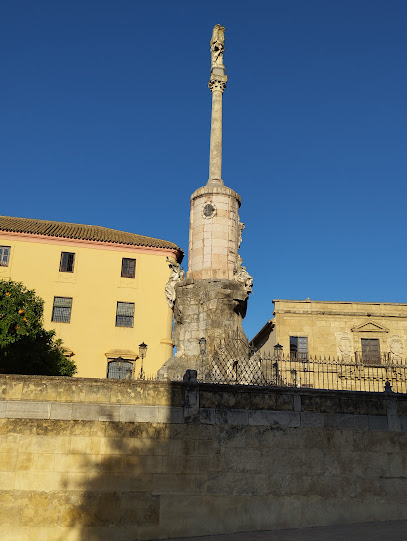
Monumento a Manolete
Experience the essence of Córdoba at the Monumento a Manolete, a tribute to the legendary bullfighter and a cultural landmark.
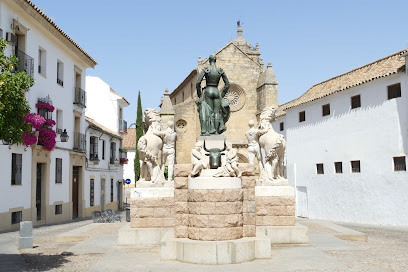
Calleja del Pañuelo
Explore Calleja del Pañuelo, a charming historical alley in Córdoba, filled with vibrant flowers and rich Andalusian culture.
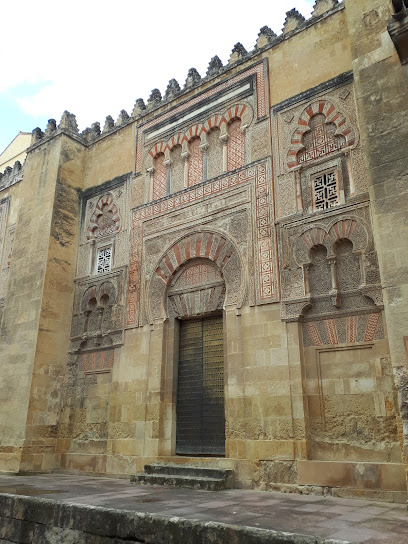
Torre-campanario de la Mezquita-Catedral de Córdoba
Explore the breathtaking Torre-campanario de la Mezquita-Catedral de Córdoba, where history meets stunning architecture and panoramic city views.
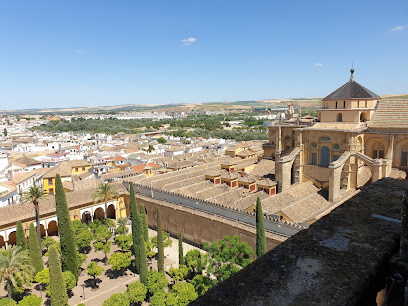
Iglesia de San Pablo
Discover the stunning Gothic architecture and rich history of Iglesia de San Pablo, a must-visit landmark in the heart of Córdoba, Spain.
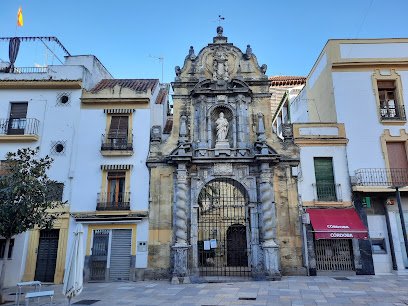
Roman Mausoleum
Discover the architectural marvel of the Roman Mausoleum in Córdoba, a historical landmark that unveils the grandeur of ancient Roman civilization.
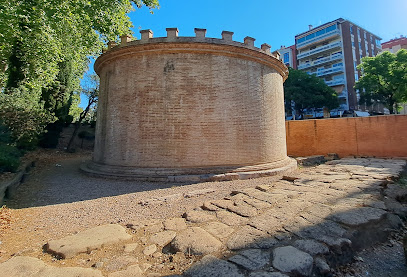
Parroquia de San Andrés Apóstol
Explore the Parroquia de San Andrés Apóstol, a stunning Catholic church in Córdoba blending history, art, and spirituality in a serene setting.
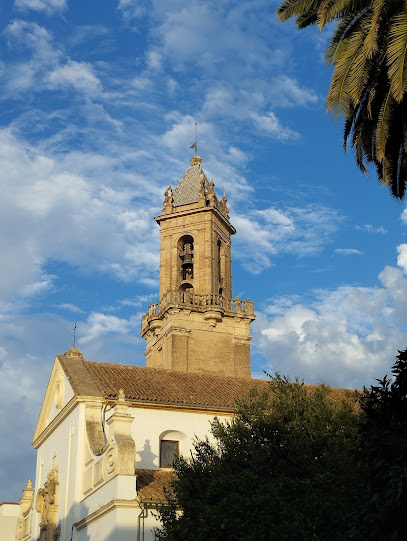
Molino de la Albolafia
Explore the enchanting Molino de la Albolafia, a historic water mill in Córdoba that offers captivating views and a glimpse into the region's agricultural past.
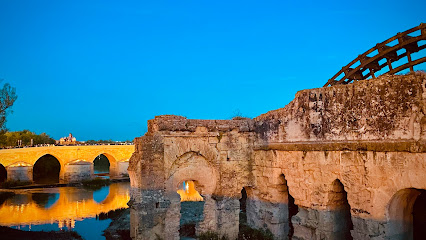
Statue of St. Archangel Raphael
Discover the Statue of St. Archangel Raphael at the Roman Bridge of Córdoba, where art meets history in a picturesque Andalusian setting.
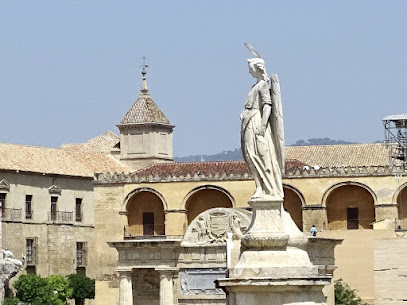
Unmissable attractions to see
Alcazar of the Christian Monarchs
Explore the Alcazar of the Christian Monarchs in Córdoba, a stunning blend of history and beauty, perfect for history lovers and travelers alike.
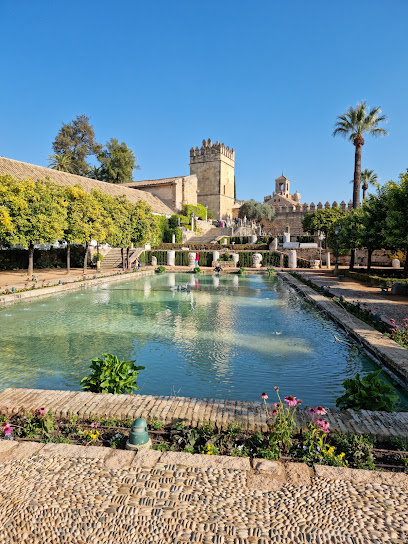
Roman Bridge of Córdoba
Discover the Roman Bridge of Córdoba, a historic marvel connecting past and present with stunning views and rich architectural heritage.
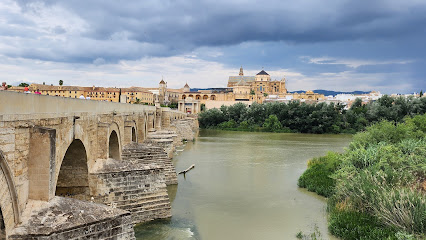
Plaza de las Tendillas
Explore Plaza de las Tendillas, a vibrant square in Córdoba rich in history, architecture, and lively local culture, perfect for all tourists.

Mosque-Cathedral of Córdoba
Discover the enchanting Mosque-Cathedral of Córdoba, where Islamic and Christian traditions intertwine in a stunning historical landmark.
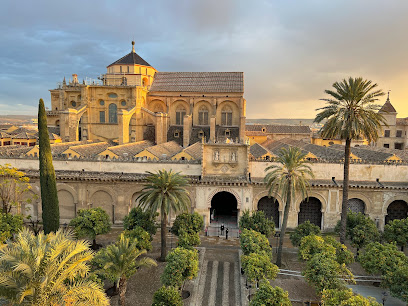
Medina Azahara - Conjunto Arqueológico Madinat al-Zahra
Explore the breathtaking ruins of Medina Azahara, a UNESCO World Heritage site that showcases the splendor of Islamic architecture and history in Córdoba, Spain.
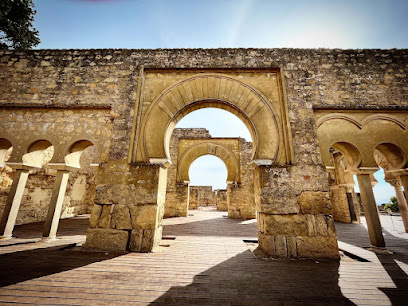
Jardines de la Merced
Discover the lush beauty of Jardines de la Merced, a tranquil garden oasis in Córdoba, perfect for relaxing amidst history and nature.
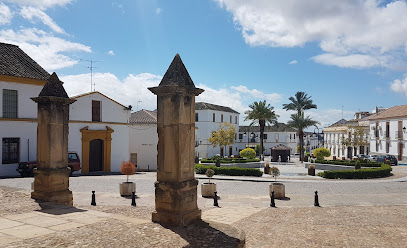
Córdoba Zoo Conservation Center
Discover the Córdoba Zoo Conservation Center, where wildlife meets conservation in a family-friendly atmosphere filled with educational experiences and natural beauty.
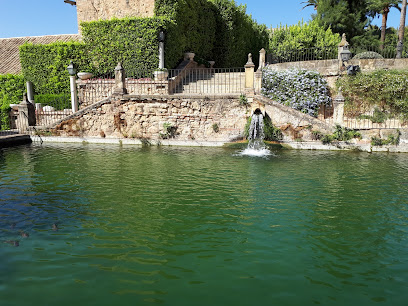
Torre De Calahorra
Explore the fascinating history and stunning architecture of Torre De Calahorra, a must-see attraction in Córdoba, Spain.
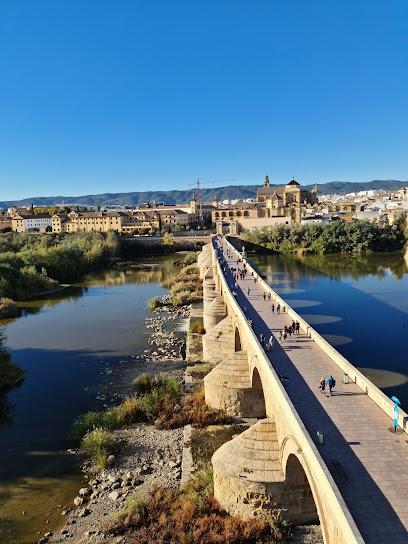
Patio de los Naranjos
Discover the serene beauty of Patio de los Naranjos, where fragrant orange trees and rich history create a tranquil oasis in the heart of Córdoba.
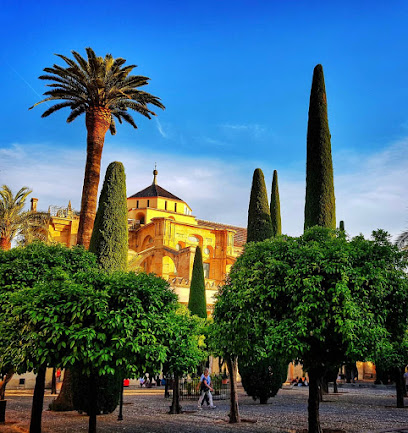
Real Jardín Botánico de Córdoba
Discover the lush landscapes and diverse plant life at the Real Jardín Botánico de Córdoba, a serene escape in the heart of the city.

Baños Árabes de Santa María
Experience the rich Moorish heritage and tranquil atmosphere of Baños Árabes de Santa María, a must-visit historical attraction in Córdoba.
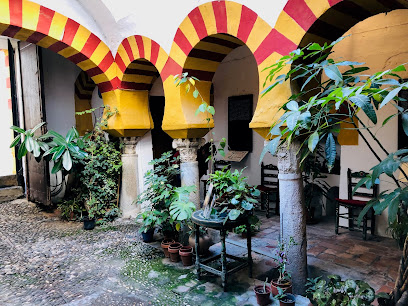
Triunfo de San Rafael de la Puerta del Puente
Experience the grandeur of the Triunfo de San Rafael, a historical landmark in Córdoba that embodies art, culture, and breathtaking beauty.
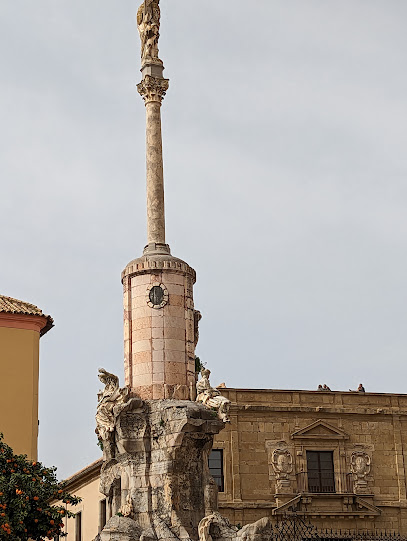
Jardines Huerto de Orive
Discover the tranquil beauty and rich history of Jardines Huerto de Orive, a stunning garden in the heart of Córdoba, Spain.
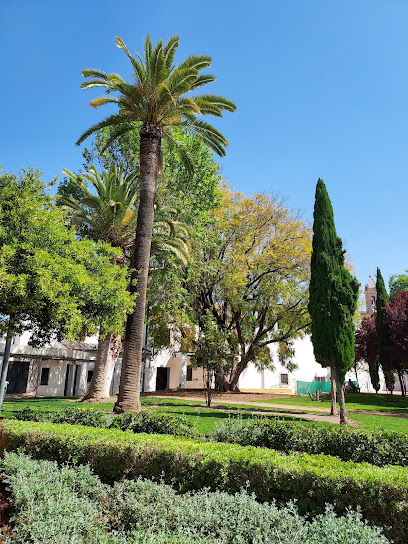
Jardines del Duque de Rivas
Explore the lush landscapes of Jardines del Duque de Rivas, a tranquil garden oasis in the heart of Córdoba, perfect for relaxation and exploration.
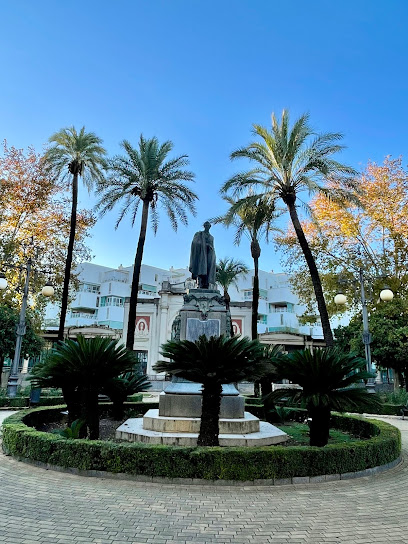
Puerta de Meho Kolodro
Explore the majestic Puerta de Meho Kolodro, a historical gateway in Córdoba that offers a glimpse into the city's rich architectural heritage and vibrant culture.

Essential places to dine
Bodegas Campos
Savor the authentic tastes of Spain at Bodegas Campos - where tradition meets exquisite dining in Córdoba.

Restaurante La Cuchara de San Lorenzo
Experience authentic Spanish flavors at Restaurante La Cuchara de San Lorenzo in Córdoba, where tradition meets modern culinary artistry.
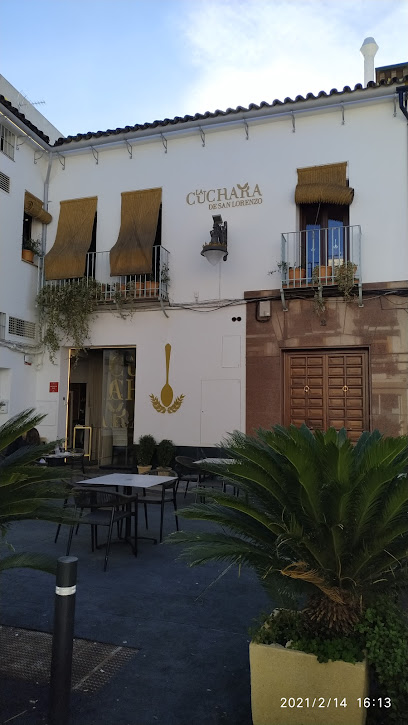
Taberna Las Beatillas
Discover authentic Spanish flavors at Taberna Las Beatillas, a must-visit restaurant in Córdoba's vibrant Centro district.

Bar restaurante La Copita de Vino
Experience authentic Andalusian flavors at La Copita de Vino - where delicious grilled dishes meet vibrant Cordoban culture.
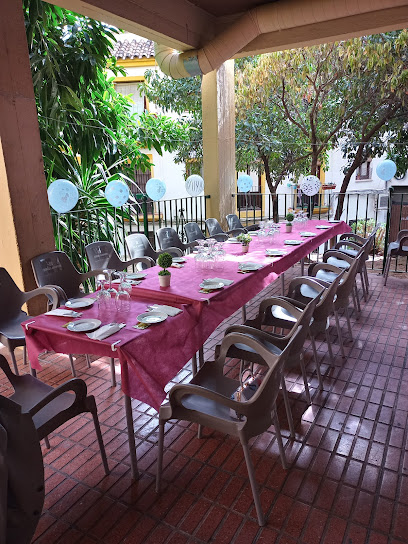
Taberna Santi - Córdoba
Discover the heart of Andalusian cuisine at Taberna Santi in Córdoba – where tradition meets flavor in every bite.
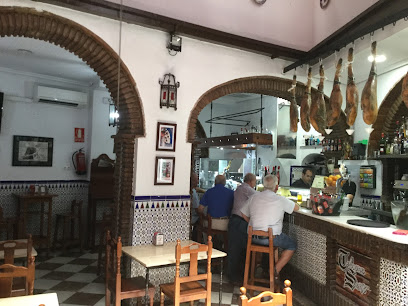
Kurtuba Gastro Bar
Discover authentic Andalusian flavors at Kurtuba Gastro Bar in Córdoba – where tradition meets modern cuisine in a vibrant setting.

La contentura
Discover La Contentura: A vibrant tapas bar in Córdoba offering exquisite dishes and live music for an authentic Spanish dining experience.
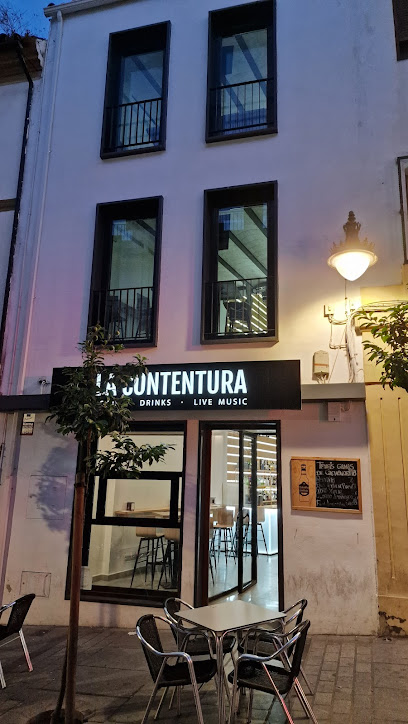
Restaurante Casa Cuba
Discover the vibrant flavors of Cuban cuisine at Restaurante Casa Cuba in Córdoba—where every dish tells a story.
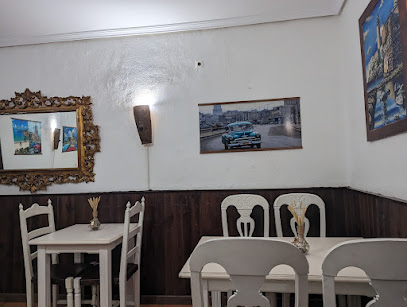
El Tercio Viejo
Experience authentic Spanish cuisine at El Tercio Viejo in Córdoba - where tradition meets flavor in a charming setting.
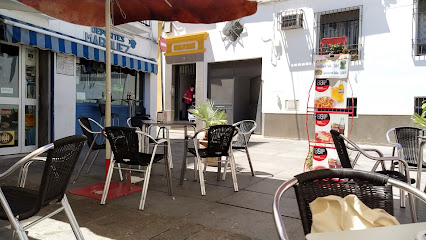
Taberna El Espartero
Experience authentic Andalusian cuisine at Taberna El Espartero - a charming tapas bar in Córdoba's vibrant center.
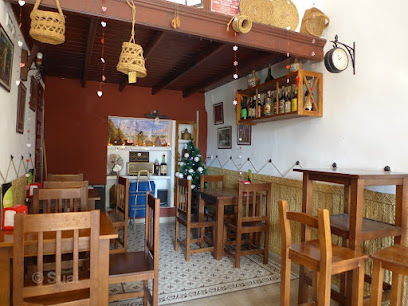
Markets, malls and hidden boutiques
PIPIOLA boutique en Córdoba
Explore PIPIOLA Boutique in Córdoba for exquisite women's clothing, bags, and accessories that blend contemporary style with traditional elegance.
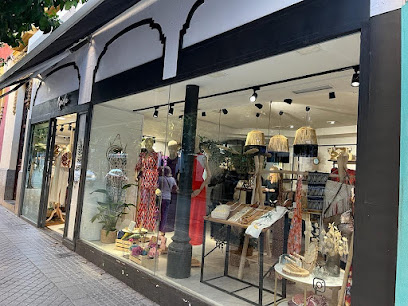
ALE-HOP
Explore the vibrant gift shop ALE-HOP in Córdoba for unique souvenirs and local crafts that capture the spirit of Spain.
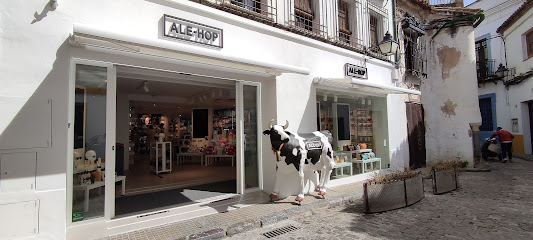
Simplemente Córdoba by Sol Courrege Boné
Explore Simplemente Córdoba: Your destination for unique souvenirs and scrapbooking treasures in the heart of the city.
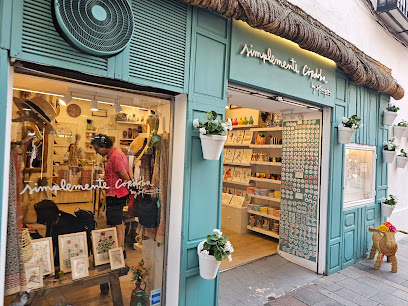
Janaís
Explore Janaís, Córdoba's unique novelty store offering exquisite bridal accessories, charming costume jewelry, and one-of-a-kind gifts to cherish forever.
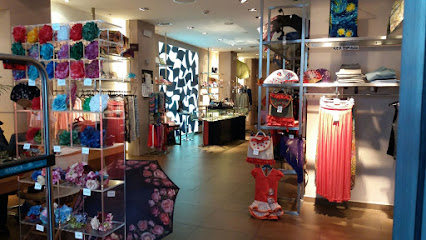
San Calixto Artesanía
Explore the best of Córdoba's craftsmanship at San Calixto Artesanía, where every gift tells a story of tradition and artistry.
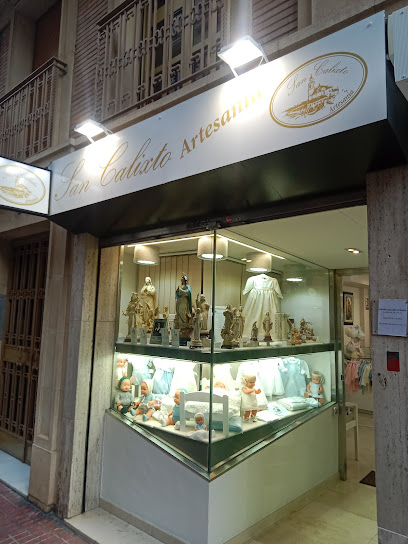
Deseo Real
Explore exquisite craftsmanship at Deseo Real, Córdoba's premier destination for fine jewelry in the heart of the city.
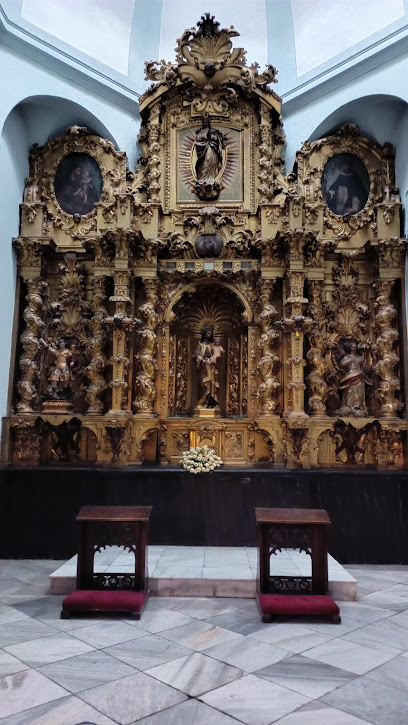
La cueva de San Pablo
Uncover exquisite craftsmanship at La Cueva de San Pablo, a premier jewelry destination in the heart of Córdoba, Spain.
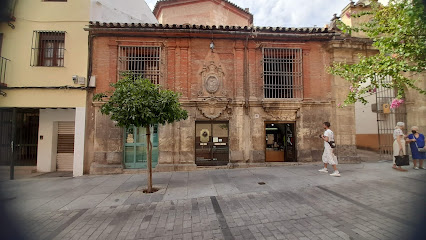
Al Maysar
Discover unique souvenirs and artisan crafts at Al Maysar, a charming gift shop in Córdoba's vibrant Centro district.
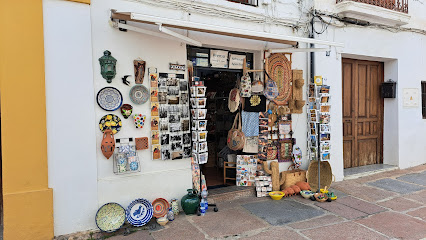
Viste Arte
Explore Viste Arte in Córdoba for unique gifts and local artisan crafts that reflect the rich culture and artistry of Spain.
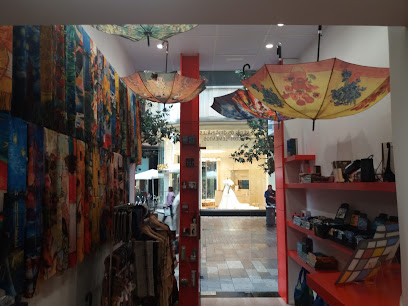
El Palacete de la Artesanía y el Souvenirs
Discover the essence of Andalusia at El Palacete de la Artesanía y el Souvenirs, where handcrafted treasures await every traveler.

Frutos Secos Yu
Discover the authentic flavors of Córdoba at Frutos Secos Yu, your go-to store for premium nuts and dried fruits in the heart of the city.
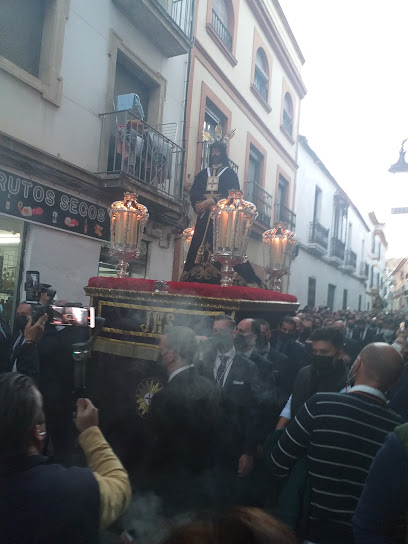
Rincón de Antonia Córdoba
Discover Rincón de Antonia Córdoba for the finest selection of formal wear in the heart of Spain's historic city, where elegance meets style.
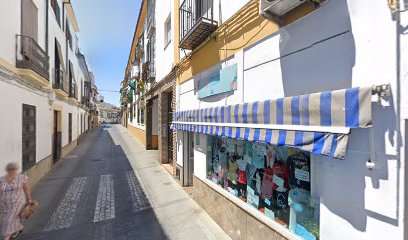
Dmaria
Explore the trendy styles at Dmaria, Córdoba's premier dress store, offering unique fashion pieces that celebrate Spanish design.
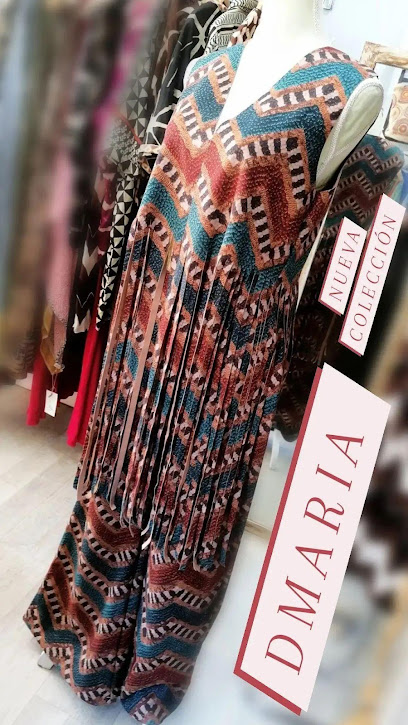
Ferjoya
Discover the charm of Córdoba through unique fashion accessories at Ferjoya, where style meets local artistry.
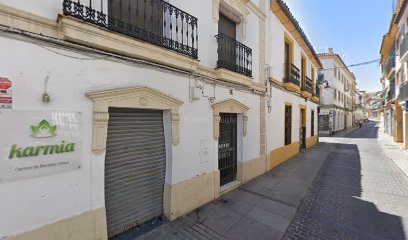
Essential bars & hidden hideouts
Jazz Cafe
Experience the soulful rhythm and vibrant ambiance of Jazz Cafe in Córdoba, where live music and great company create unforgettable nights.
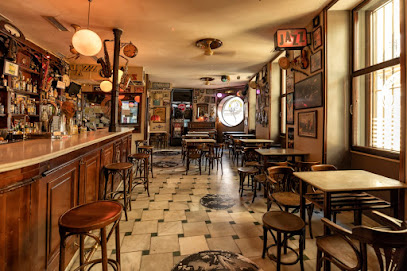
La contentura
Discover the vibrant culinary scene of Córdoba at La Contentura, where delightful tapas meet unforgettable live music in a cozy setting.

Limbo
Discover the vibrant nightlife of Córdoba at Limbo, a lively bar offering a diverse drink selection and an unforgettable atmosphere.
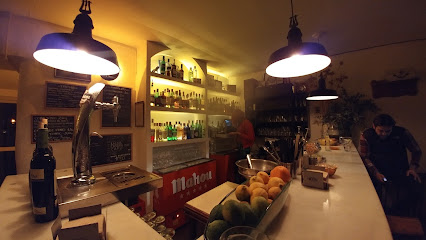
Bar El Lagar de Orive
Experience the vibrant flavors and lively atmosphere at Bar El Lagar de Orive, a must-visit bar in the heart of Córdoba.
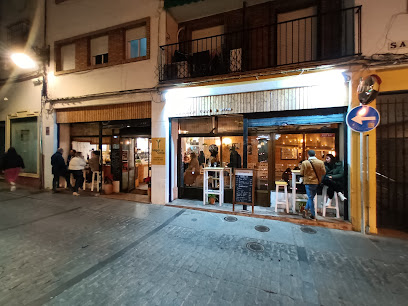
Ideal
Discover the vibrant nightlife of Córdoba at Ideal Pub, where local flavors and a friendly atmosphere await every visitor.
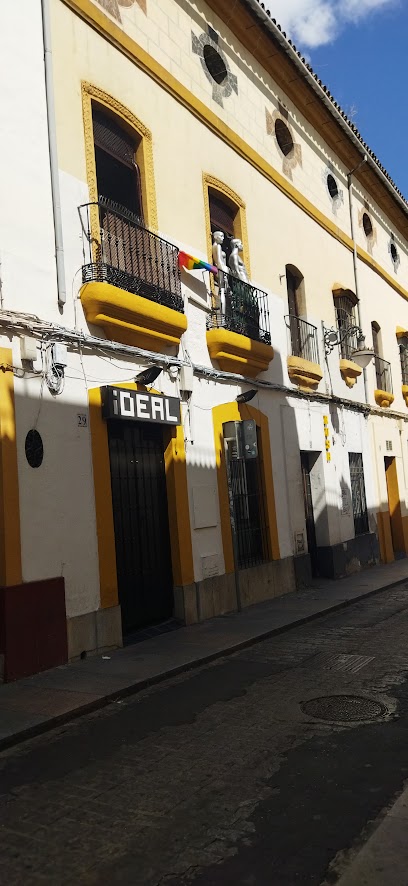
Bar Pancho
Discover the essence of Cordoba at Bar Pancho, where authentic tapas and a vibrant atmosphere await you in the heart of the city.
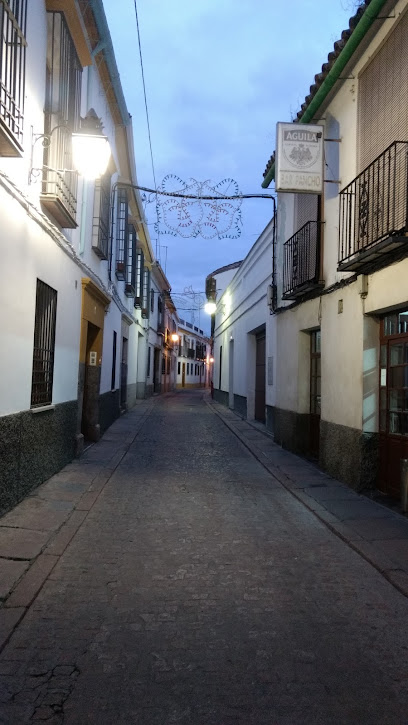
Bar B
Discover the lively spirit of Córdoba at Bar B, where authentic tapas and a vibrant atmosphere await every visitor.
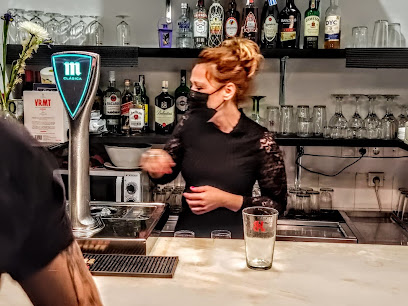
Taberna El Espartero
Discover authentic Andalusian tapas and warm hospitality at Taberna El Espartero in the heart of Córdoba.
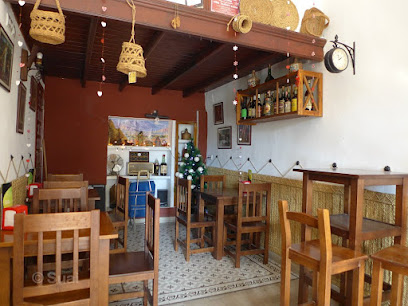
Bodeguita La Venia
Experience the vibrant bar scene of Córdoba at Bodeguita La Venia, where local wines and a welcoming atmosphere await.

El Mosaico Bar
Discover the vibrant spirit of Córdoba at El Mosaico Bar, where local wines and traditional tapas create an unforgettable culinary experience.
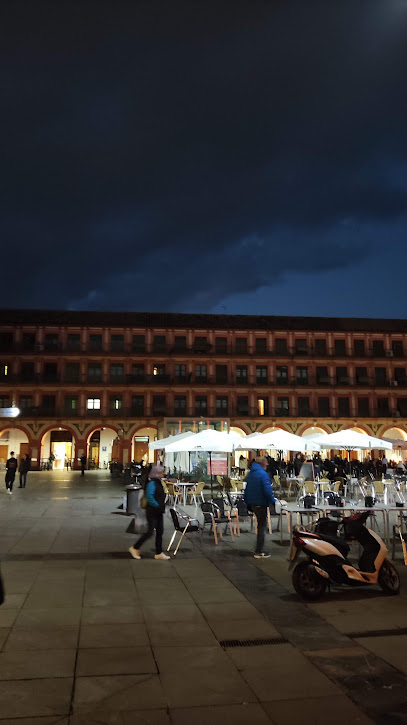
Local Phrases
-
- HelloHola
[o-la] - GoodbyeAdiós
[a-di-ós] - YesSí
[sí] - NoNo
[no] - Please/You're welcomePor favor/De nada
[por fa-vor/de na-da] - Thank youGracias
[gra-cias] - Excuse me/SorryPerdón/Lo siento
[per-dón/lo sien-to] - How are you?¿Cómo estás?
[¿có-mo es-tás?] - Fine. And you?Bien. ¿Y tú?
[bien. ¿y tú?] - Do you speak English?¿Hablas inglés?
[¿ha-blas in-glés?] - I don't understandNo entiendo
[no en-tien-do]
- HelloHola
-
- I'd like to see the menu, pleaseMe gustaría ver el menú, por favor
[me gus-ta-ría ver el me-nú, por fa-vor] - I don't eat meatNo como carne
[no co-mo car-ne] - Cheers!¡Salud!
[¡sa-lud!] - I would like to pay, pleaseQuisiera pagar, por favor
[qui-sie-ra pa-gar, por fa-vor]
- I'd like to see the menu, pleaseMe gustaría ver el menú, por favor
-
- Help!¡Ayuda!
[¡a-yu-da!] - Go away!¡Vete!
[¡ve-te!] - Call the Police!¡Llama a la policía!
[¡lla-ma a la po-li-cía!] - Call a doctor!¡Llama a un médico!
[¡lla-ma a un mé-di-co!] - I'm lostEstoy perdido
[es-toy per-di-do] - I'm illEstoy enfermo
[es-toy en-fer-mo]
- Help!¡Ayuda!
-
- I'd like to buy...Me gustaría comprar...
[me gus-ta-ría com-prar...] - I'm just lookingSolo estoy mirando
[so-lo es-toy mi-ran-do] - How much is it?¿Cuánto cuesta?
[¿cuán-to cues-ta?] - That's too expensiveEso es demasiado caro
[e-so es de-ma-sia-do ca-ro] - Can you lower the price?¿Puedes bajar el precio?
[¿pue-des ba-jar el pre-cio?]
- I'd like to buy...Me gustaría comprar...
-
- What time is it?¿Qué hora es?
[¿qué ho-ra es?] - It's one o'clockEs la una
[es la u-na] - Half past (10)Las diez y media
[las diez y me-dia] - MorningMañana
[ma-ña-na] - AfternoonTarde
[tar-de] - EveningNoche
[no-che] - YesterdayAyer
[a-yer] - TodayHoy
[hoy] - TomorrowMañana
[ma-ña-na] - 1Uno
[u-no] - 2Dos
[dos] - 3Tres
[tres] - 4Cuatro
[cua-tro] - 5Cinco
[cin-co] - 6Seis
[seis] - 7Siete
[sie-te] - 8Ocho
[o-cho] - 9Nueve
[nue-ve] - 10Diez
[diez]
- What time is it?¿Qué hora es?
-
- Where's a/the...?¿Dónde está el/la...?
[¿dón-de es-tá el/la...?] - What's the address?¿Cuál es la dirección?
[¿cuál es la di-rec-ción?] - Can you show me (on the map)?¿Puedes mostrarme (en el mapa)?
[¿pue-des mos-trar-me (en el ma-pa)?] - When's the next (bus)?¿Cuándo es el próximo (autobús)?
[¿cuán-do es el pró-xi-mo (au-to-bús)?] - A ticket (to ....)Un billete (a ....)
[un bi-lle-te (a ....)]
- Where's a/the...?¿Dónde está el/la...?
History of San Andrés-San Pablo
-
San Andrés-San Pablo, like much of Córdoba, bears the marks of Moorish rule from the 8th to the 13th centuries. The area was characterized by narrow winding streets, whitewashed houses, and a distinctive architectural style that reflects the Islamic influence. The Great Mosque of Córdoba, a symbol of this period, is located nearby, showcasing the rich cultural exchange that occurred during the Caliphate of Córdoba.
-
Following the Christian Reconquista in 1236, San Andrés-San Pablo saw a shift in its cultural and architectural landscape. Churches were built over former mosques, and the area became integrated into the growing Christian community. The Church of San Andrés, a notable example, was constructed during this time, reflecting the transition of the neighbourhood's identity.
-
In the late 14th century, the Black Death swept through Córdoba, impacting communities across the city, including San Andrés-San Pablo. The plague led to a significant loss of life and altered the population dynamics in the neighbourhood. The aftermath saw changes in social structures and an increase in religious fervor, leading to the establishment of new religious institutions.
-
The 19th century marked a period of urban expansion and modernization in Córdoba, including San Andrés-San Pablo. The introduction of new infrastructure, such as railways and improved roads, facilitated economic growth. The neighbourhood became more accessible, attracting a diverse population and contributing to its vibrant culture. This era also saw the development of local industries, which shaped the neighbourhood's economy.
-
Today, San Andrés-San Pablo is known for its rich cultural heritage, particularly its traditional festivals. The annual Festival of San Andrés celebrates the patron saint with processions, music, and gastronomy, representing the local community's spirit. The neighbourhood’s streets come alive with decorations and activities, reflecting a deep-rooted tradition that honors its historical past while fostering a sense of community.
San Andrés-San Pablo Essentials
-
San Andrés-San Pablo is conveniently located in Córdoba, Spain. From the city center, you can easily reach this neighborhood by taking a local bus. Routes 3 and 5 connect the center with San Andrés-San Pablo. Alternatively, taxis are readily available and offer a quick and comfortable means of transport. If you are arriving from the Córdoba train station, buses and taxis can also take you directly to the neighborhood.
-
San Andrés-San Pablo is a walkable neighborhood, with many attractions within easy reach on foot. Local buses operate frequently, connecting you to other parts of Córdoba. Bicycles can also be rented from various shops nearby, allowing for a more leisurely exploration of the area. Taxis are available for longer journeys or if you're carrying heavy bags.
-
San Andrés-San Pablo is generally a safe neighborhood, but like any urban area, it is wise to take standard precautions. Avoid poorly lit streets at night and keep an eye on your belongings, especially in crowded areas. While there are no specific high-crime areas targeting tourists, it is advisable to remain vigilant and aware of your surroundings, particularly near the busier market areas.
-
In case of emergency, dial 112 for immediate assistance in Spain. Local police stations and medical facilities are available in and around San Andrés-San Pablo. It is recommended to have travel insurance that covers emergencies. For non-urgent health issues, pharmacies are located throughout the neighborhood where you can purchase over-the-counter medications.
-
Fashion: Do dress modestly when visiting religious sites, such as churches. Avoid wearing revealing clothing. Religion: Do respect local customs; when entering churches, cover your shoulders and knees. Public Transport: Do be respectful to fellow passengers, and offer your seat to the elderly or disabled. Don’t eat or drink on public transport. Greetings: Do greet with a friendly handshake; a nod of the head is also appreciated. Eating & Drinking: Do try local tapas and accept food offerings graciously. Don’t refuse hospitality, as it can be seen as impolite.
-
To experience San Andrés-San Pablo like a local, visit the local markets for fresh produce and authentic Andalusian products. Engage with locals, as they are often eager to share their stories and recommendations. Don't miss the chance to try local specialties at nearby tapas bars. For a unique experience, attend a flamenco show at a local venue, which captures the essence of Andalusian culture.
Trending Landmarks in San Andrés-San Pablo
-
Alcazar of the Christian Monarchs
-
Roman Bridge of Córdoba
-
Plaza de la Corredera
-
Cristo de los Faroles
-
Puerta del Puente
-
Baños Árabes de Santa María
-
Triunfo de San Rafael de la Puerta del Puente
-
Monumento a Manolete
-
Calleja del Pañuelo
-
Torre-campanario de la Mezquita-Catedral de Córdoba
-
Iglesia de San Pablo
-
Roman Mausoleum
-
Parroquia de San Andrés Apóstol
-
Molino de la Albolafia
-
Statue of St. Archangel Raphael
Nearby Cities to San Andrés-San Pablo
-
Things To Do in Ronda
-
Things To Do in Málaga
-
Things To Do in Casemates Square
-
Things To Do in Moorish Castle
-
Things To Do in Catalan Bay
-
Things To Do in Gibraltar
-
Things To Do in Main Street
-
Things To Do in Queensway Quay Marina
-
Things To Do in Alameda Botanic Gardens
-
Things To Do in Cádiz
-
Things To Do in St. Michael's Cave
-
Things To Do in Gorham's Cave Complex
-
Things To Do in Huelva
-
Things To Do in Europa Point
-
Things To Do in Badajoz







